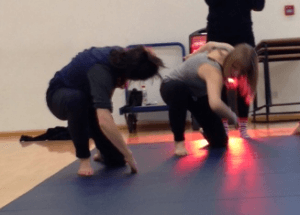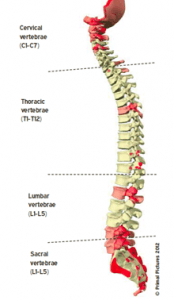Tuesday 18th February 2014
Sometimes we over look the sense of touch, not just in dance but in our daily life, the sense of touch is just as informative as the sense of seeing and hearing. Dieter Heitkamp writes ‘Communication through the skin allows us to interact in a more flexible, maybe even more sensuous, joyful way.’ (Heitkamp, 2003, 264) Heitkamp is a pioneer when it comes to interest in contact improvisation and exploring the intricate details, he seems to be fascinated by the way touch allows so much expression and emotion in dance. Heitkamp talks about how you can cover up your eyes and ears but you can never be rid of the sense of touch. Touch is something that allows us as dancers and humans to communicate whether it is by touching or being touched, it is an exchange of information ‘…through the skin.’ (Heitkamp, 2003, 256)
I could not imagine everyday life without the sense of touch; it would definitely make contact improvisation much harder. When my skin comes into contact with others during classes first it is uncomfortable but when I feel like our bodies start to communicate and move as one I relax and let my skin try to feel what it wants to. Heitkamp talks about the connection of the skin and the brain, asking the question ‘Does not thinking have as much to do with the skin as with the brain?’ (Heitkamp, 2003, 260) In comparison when I’m in contact with another dancer I feel like my skin is forcing my brain to feel something it doesn’t want to… or is it the other way around? I’m not sure. Without touching something the thought of its existence is altered, how to you know the feeling of something without touching it? Or does it not matter? These are some of the many questions that came into my head when reading this chapter.
Heitkamp has inspired me to think more about the sense of touch through the skin when in contact classes. The importance of the sense of touch is just as important as seeing the space, you need to touch it, let your skin connect with its outer kinesphere. Listening through the skin allows a calmer and smoother exploration through movement with another body. Contact improvisation is generally about exploring movement, mostly without any advance warning, which Heitkamp feels allows room for further exploration. Skin to skin, coming into contact can be alarming and cannot always be described but purely experienced.
For me to progress further in the practical classes I need to have a stronger understanding of the importance of the sense of touch putting it together with those of smell, hearing and seeing. This piece of reading has definitely helped me embrace the sense of touch however I would like to experiment with the physical sense of touch as well as the internal. I feel like the new information I have gained needs to be put into practice for me to fully understand its meaning, therefore I will be applying this in the weeks to come.
Work cited:
Heitkamp, D. (2003) Moving from the Skin: An Exploratorium. Contact
Quarterly/ Contact Improvisation Sourcebook II, Vol. 28:2. Pp. 256- 264.

